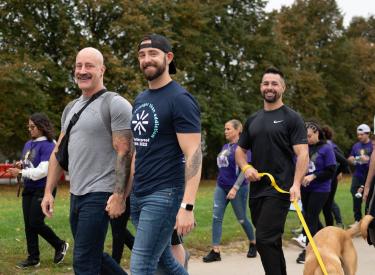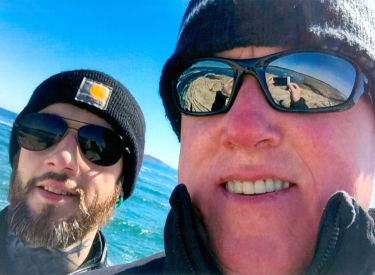
Understanding the Addiction Treatment System
My son, Chris, died of a drug overdose at 21 years old. That was two years ago, and I am still flooded with painful memories of the seven-year journey that lead to that tragic ending.
It started when he was just fourteen.
He had three operations in one year as a result of sports injuries, each one followed by a prescription for 30 days of pain killers. At the time, I did not have a clue about the connection between pain killers and addiction, the risks or the warning signs.
When Chris was a senior in high school he turned to heroin. After several trips to the ER he had to go to detox and then to rehab. The doctors recommended Caron, because it was reportedly the best, and I of course wanted the best for my son. At the end, they recommended he go to the extended care program, which in retrospect he really may have needed, but that was $60,000 and not only could I not afford it. I wanted to ensure he was able to graduate from high school.
I thought one trip to rehab would do the trick, only to learn that the success rate is actually very low.
Chris went on to seven more rehabs before he died. I was always frantic looking for the right treatment. I would try searching for “science-based” rehabilitation centers online, and a series of 800 numbers would pop up, all of which lead me to call centers that provided recommendations, but it was unclear what these recommendations were based on.
I would try to go through my insurance company to see who they covered. Here in New York, the selection was pretty minimal. I would spend hours on the phone with my insurance company and with the center to get him cleared, and then I had to make sure he would be willing to go.
Finally, after the second year of this with no improvement with my son, I started looking away from the East Coast and found some places in Colorado.
The first place in Colorado Springs was on our health plan and although he was finally admitted for a 28-day program, insurance stopped paying after two weeks. Luckily, I had another place lined up. They helped Chris get Colorado insurance that would pay for a large portion of the rehab and would do so for a three-month program. Chris did well for about two months, and then eventually walked out of the program. I found another rehab in Denver and Chris actually made it through the 3 months and graduated to their sober living house. Unfortunately, they did this right after Thanksgiving and before Christmas, which was terrible timing. He relapsed again.
He was relocated to a more secure rehab in Utah, but it just got worse from there. Someone brought drugs into that “more secure” rehab and he was rushed to the ER. He then became very depressed over the 45 days he was there and wanted to just come home. Quite frankly, I wanted him home too.
He had been in and out of rehabs for over two years and was exhausted. So was I.
When he left the rehabilitation center in Utah, he started on Vivitrol, which took away the cravings for opioids. In retrospect, I think if he had access to addiction medications in the very beginning, he would have had a much better chance of actually being rehabilitated.
When someone is in the position to be finding care for a loved one, it’s a dire moment.
We aren’t and shouldn’t have to be experts; which is why the ATLAS platform will be such an important tool to those in a similar position. ATLAS will include objective information on all addiction treatment facilities in each of its six pilot states (including New York), and will allow users to search by informational that is critical to them, such as location, program type descriptions, or insurance carrier.
No mother should have to walk in my shoes, but until the day that’s possible I am hopeful that a tool like ATLAS will be provide fact-based guidance and ensuring patients receive the care that’s right for them.
Diana Yoder is a Shatterproof Ambassador.




